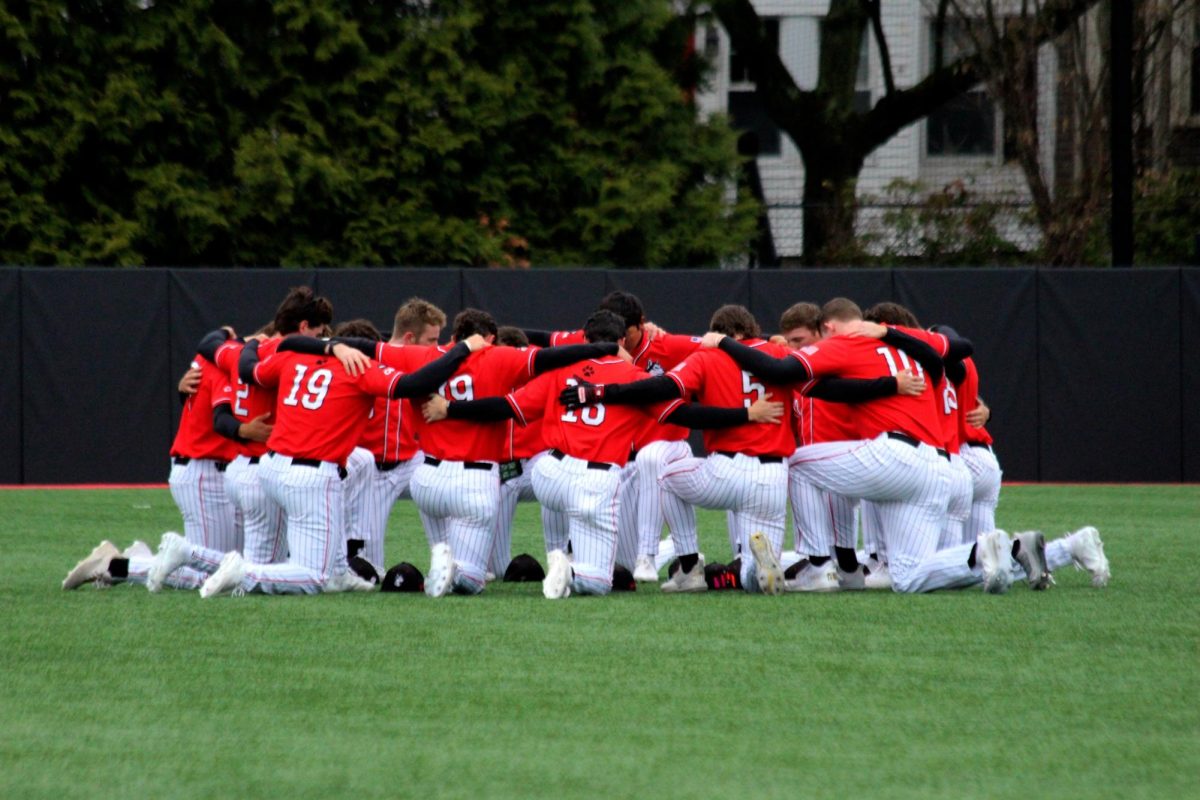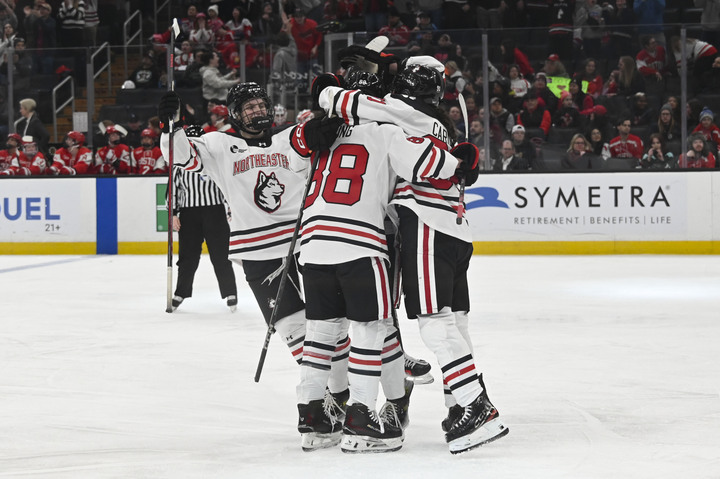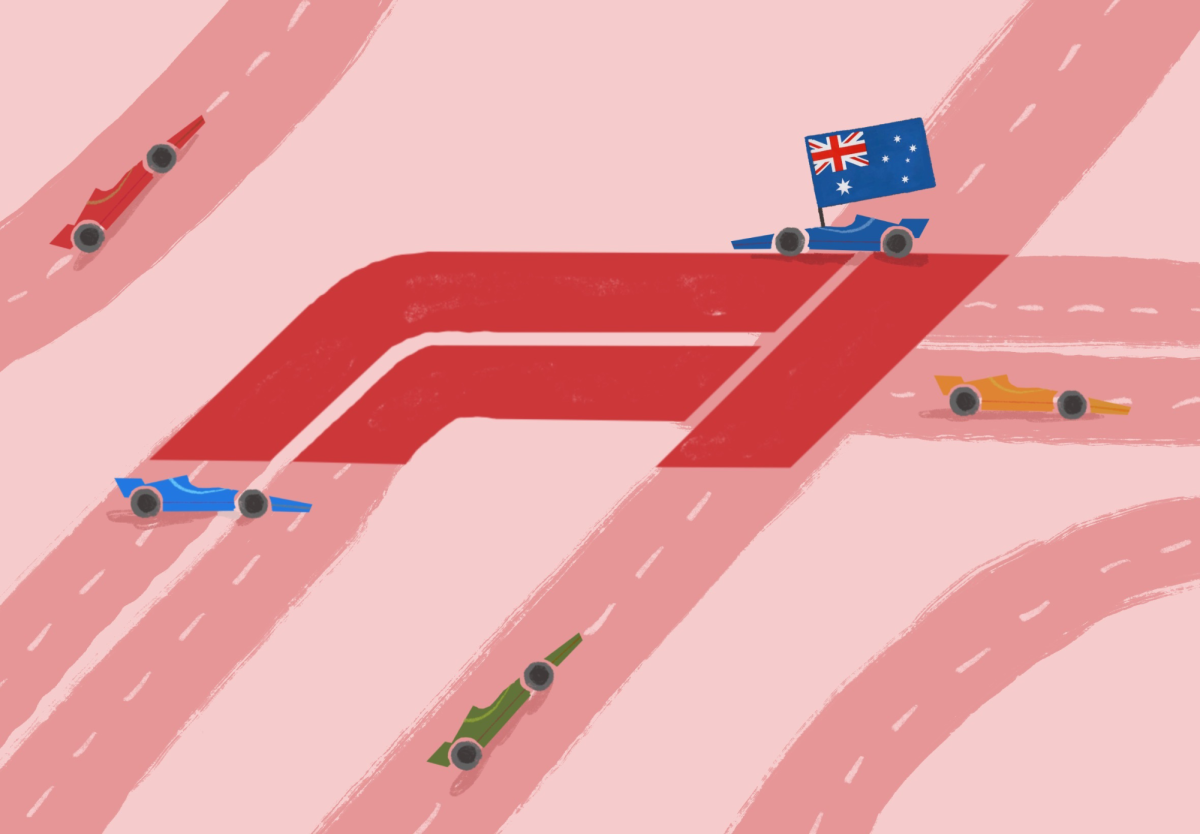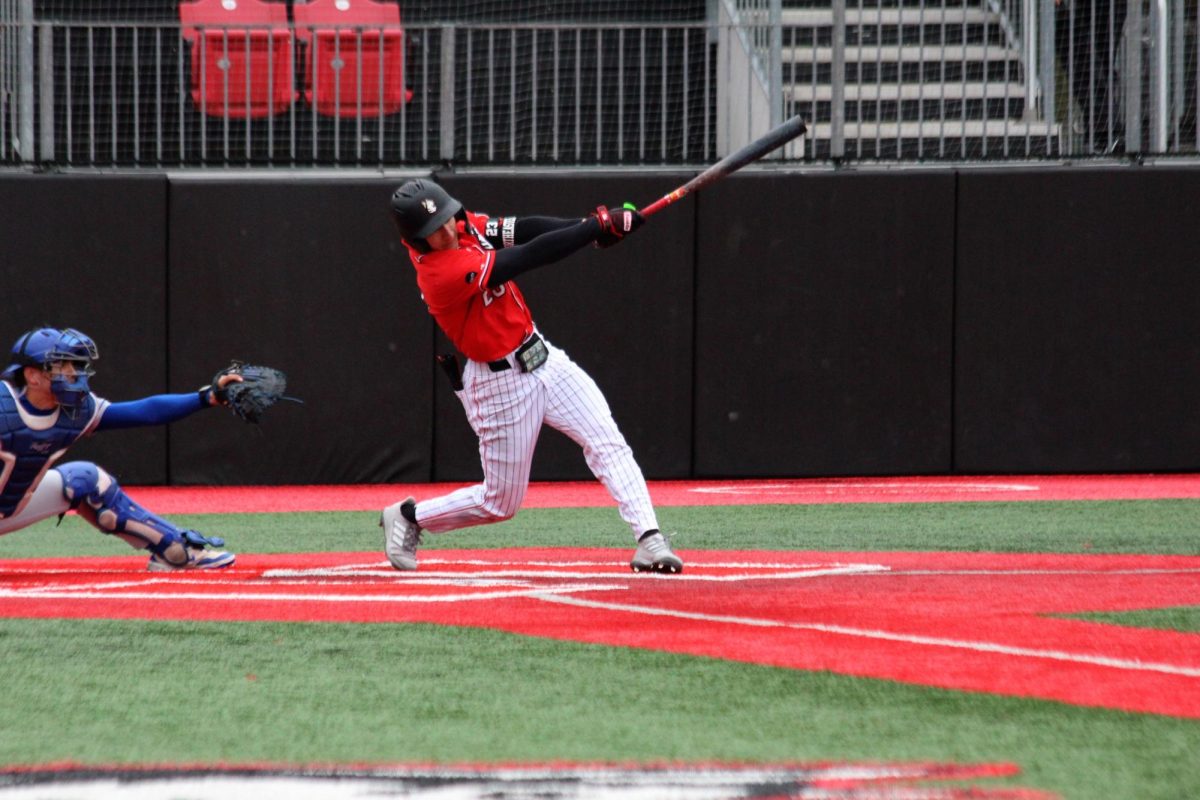By Brianna Hollis, News Correspondent
Chelsey Goldberg got to Matthews Arena early to do some extra stretching and foam rolling. She put her country playlist on shuffle and taped her stick – everything she usually does before a game.
“I’ve got to listen to my country music,” she said.
It was a standard early-season game, a pre-conference matchup against the Rochester Institute of Technology. But for Goldberg, it turned out to be so much more.
As she took to the ice Oct. 5, she scored her first collegiate goal, and then her second – earning her the title of Women’s Hockey East Association (WHEA) Player of the Week.
But Goldberg’s reward goes far beyond her stats and WHEA accolades. The junior hockey player hasn’t had an injury- or illness-free season since 2008, her sophomore year of high school. This game marked the manifestation of her resilience amidst physical adversity.
“I’m ready for a healthy season,” she said. “It was so good to play the game I love playing and finally contribute.”
The past four years have been a demoralizing cycle: injury, vigorous rebuilding period, setback.
The Agoura Hills, Calif., native figured her bad luck was over after her high school years at the North American Hockey Academy in Stowe, Vt. – that after breaking her left fibula at 17 and then her right at 18, she’d get to stay on the ice for a full year. But her start as a Husky athlete didn’t go as planned. Midway through her freshman year, the 2011-12 season, she got a grueling case of mononucleosis, taking her out of physical activity until that May.
Although cleared, Goldberg was not at 100 percent. Her symptoms were manageable but she was weak, and she had been out of the game for a while. So Goldberg used the summer to rejuvenate her body. Resisting the summer life of a typical college student, she got ample amounts of rest and eased into her training. Once she was good to go, she hit her training grind hard and entered her sophomore year healthy and confident.
But as her second season as a Husky began, so did pain in her left ankle.
“I could feel the hardware from my fibula surgery,” she says of the beginning of the 2012-13 season. “Something was definitely wrong.”
A visit to the doctor confirmed her intuition as X-rays and MRIs concluded that the screws and plate were running into the ligaments in her foot. The doctor recommended she get them removed. The surgery went well, and Goldberg was cleared by January 2013. But at this point, the Huskies were approaching the critical time of their season, and Goldberg wasn’t in competition shape.
So Goldberg had to sit out another Beanpot, another league playoff.
Yet after each fall, each surgery, each “I have some bad news,” Goldberg found it within herself to heal quickly, then push herself the moment she could. She aimed to not only regain her original strength, but reach one level higher.
“I recruited Chelsey because she was a hard worker on and off the ice,” coach Dave Flint said. “I knew the effort I was always going to get from her.”
Every month for an elite athlete is a pivotal one, and Goldberg has recently sat out more months than she has played. Not only does she miss out on game-time and practice experience, but she inevitably falls further behind her healthy teammates.
“I had to recover, but I also had to catch up to where everyone else was,” she said. “And then I had to get even stronger. I worked my butt off this summer.”
Her training regimen included four days-a-week of weight lifting and speed training, and subsequent skating and recovery exercises the remaining days. Trainers who worked with Goldberg over the summer were consistently impressed with her diligence in the weight room.
“Chelsey would push herself to her limits,” Northeastern Strength and Conditioning Intern Dan Buck, who worked with Goldberg, said. “She was always one of the first athletes in and last athletes out. She would take the time to be coached and make the corrections she needed to in the weight room to help her on the ice.”
And, according to Buck, Goldberg would take time out of her own training to help her teammates with technique and constantly provide them with encouragement.
“When Chels was injured it was definitely really hard on her,” senior goalie Kelsey O’Sullivan said. “But she never let it show. She was always supporting her teammates in any way possible with a smile on her face.”
O’Sullivan’s comments mirror Goldberg’s attitude throughout her injury-laden history. Instead of wallowing in a perpetual state of frustration, with each setback she thought “I’ve already done this before so I can totally do it again.”
She found a way to fully invest in whatever role she could take on, whether it was physically on the ice, or someone to get advice from in the locker room before a big game.
“Not playing isn’t an excuse to not be a teammate,” Goldberg said. “A lot of athletes need more support and confidence to keep playing, so I kept giving them support and they knew I always had their back.”
This mindset resonates with those who work with her.
“She is an inspiration to many,” Buck said. “She deserves every bit of the recent success she has created for herself.”
Goldberg drove herself with a simple thought – an idea she thinks many athletes lose in the shuffle of their careers.
“The biggest factor is the opportunity to play,” Goldberg said. “Knowing I could put the jersey on, knowing I could lace up the skates. That’s just exactly what I wanted to do: to play the game I grew up playing, the game I love.”








